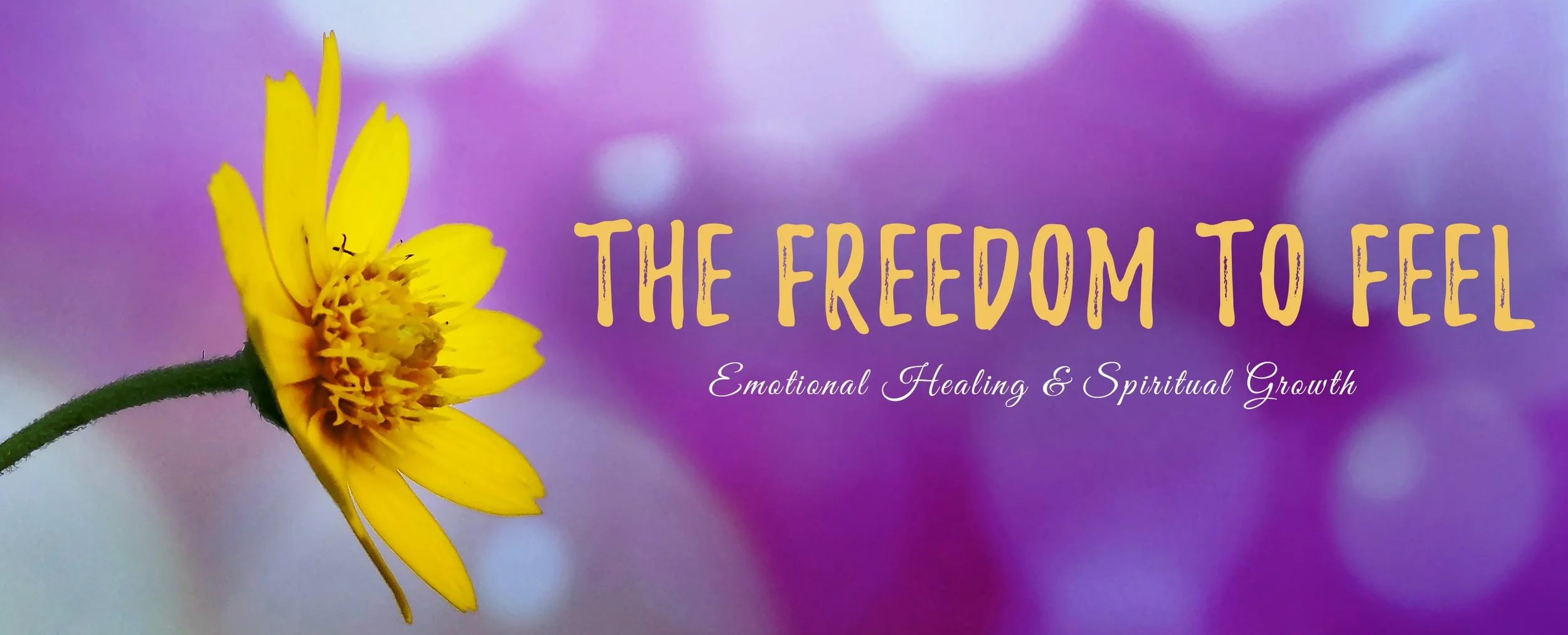RETHINKING TRAUMA TREATMENT
“The aim of trauma treatment is to update memories that have been encoded to produce fear, shame and other painful emotions in response to an event with new interpretations or meanings so that the memories become non-threatening.”
Not only does Courtney Armstrong have a deep understanding of the nature of trauma and treating its debilitating effects, she has the ability to explain complex theory in language that readers can understand. This winning combo makes much of the information in Rethinking Trauma Treatment, a book written for clinicians, worthwhile for trauma survivors as well as for the people in their lives who are trying to support and care for them.
The book is divided into three sections: developing the therapeutic alliance, transforming traumatic memories, and post-traumatic growth. Armstrong’s liberal use of case histories and client anecdotes illustrates what happens intrapsychically and interpersonally to people who have experienced trauma and are trying to move beyond its lingering, painful memories. Describing how therapists need to create safe havens in their sessions with trauma survivors, she underscores how attachment disorders leave them anxious, insecure, reactive and mistrustful of others, all of which make developing rapport and sustaining connection a challenge.
She goes on to present exercises that ground and soothe clients and are necessary not only for them to tolerate the therapist’s exploration of their traumatic memories, but for them to become less reactive in their lives. The range of Armstrong’s interventions is impressive, and her clinical examples show the reader what approaches work and how attunement is key to providing exactly what each client needs for healing. This process, similar to observing master therapists interview clients, will teach novice clinicians a great deal about how to approach and relate to all, not just traumatized, clients by paying attention to Armstrong’s nuanced and enlightened therapeutic responses.
Section two explains what happens to the brain and body when someone experiences trauma. Armstrong defines trauma as “a disorder of memory,” a definition which is key to understanding how she works with it. Early on in the book, she describes how the brain reacts to “emotionally stressful encounters” through the amygdala encoding “all the sensory information associated with the event into what is called an implicit memory . . . a network of neurons that contains the felt, experiential part of memory.” She stresses that implicit memory is far different from explicit or didactic memory which records the factual details of events.
The aim of trauma treatment is to update memories that have been encoded to produce fear, shame and other painful emotions in response to an event with new interpretations or meanings so that the memories become non-threatening. Armstrong uses the example of a “virus or software program with a bug that gets downloaded to a computer.” Just as the computer needs to be recoded when there are errors, so do our brains. Once memory updates are completed through a five-step protocol contained in Armstrong’s acronym RECON, the painful emotions experienced in an event lose their toxicity.
Section two also addresses specific types of trauma: sexual and combat, abuse from childhood, and traumatic grief and loss. Again, Armstrong uses an abundance of examples to illustrate the theory behind memory reconsolidation, so that what she is doing therapeutically, which may feel like magic to the transformed client, is grounded in intentional interventions that are tailored to resolving each type of trauma.
The final section of the book is devoted to clients’ improved mental health and to what therapists must do to hold onto their own. Most readers will be familiar with the term PTSD or Post-Traumatic Stress Disorder, but many may not know what Post-Traumatic Growth is: the healthy, positive changes that occur in trauma survivors’ lives down the road. This transformation has been studied and validated by scientific research—many people who had horrific experiences that they thought would scar them for life, instead, have gone on to achieve five specific positive changes: “greater sense of personal strength, openness to new possibilities, greater appreciation for life, spiritual development, and enhanced relationships.”
Additionally, Armstrong cautions therapists who work frequently and intensively with trauma survivors to watch out for common hazards that might arise and impact their own mental health. She describes therapists’ risk for compassion fatigue or numbing out, loss of empathy for trauma clients, and emotional burnout from the stress of their work. Citing examples of each, she encourages therapists to take care of themselves by finding emotional balance in their lives.
Therapists who are new to the complexities of trauma resolution will be grateful for Armstrong’s inclusion of learning tools such as diagrams, client worksheets, and verbatim therapist-client dialogues. Clinicians who already use the book’s cutting-edge memory reconsolidation approach will deepen their knowledge of its principles and find myriad practices and applications to make certain that trauma survivors are well served.
This article was written by Karen R. Koenig
Click HERE to Learn more about Karen’s work.
WEBSITES: http://www.karenrkoenig.com/
http://www.nicegirlsfinishfat.com/
THE CONNECTION BETWEEN TRAUMA AND PERSONAL GROWTH
I bet all of you have heard of Post-traumatic stress, but I wonder how many of you know about Post-traumatic growth (PTG). We so often think of the downside of trauma—depression, hyper-vigilance, anxiety and flashbacks—but it turns out that there’s an upside to it as well. The term, post-traumatic growth, was first used by Richard Tedeschi, Ph.D. and Lawrence Calhoun, Ph.D. in 1995 at the University of North Carolina to describe the positive changes that they saw in patients who had been affected by and were struggling with trauma.
If you are someone who’s been impacted by trauma, you might find it hard to believe that there’s anything positive about it, but research tells us that there is. "People develop new understandings of themselves, the world they live in, how to relate to other people, the kind of future they might have and a better understanding of how to live life," says Tedeschi. Tanako Katu, Ph.D. at Oakland University explains that, “PTG…refers to what can happen when someone who has difficulty bouncing back experiences a traumatic event that challenges his or her core beliefs, endures psychological struggle (even a mental illness such as post-traumatic stress disorder), and then ultimately finds a sense of personal growth. It's a process that "takes a lot of time, energy and struggle.”
According to the Post-Traumatic Growth Inventory (PTGI) which uses self-report scales, people may change positively in these areas: appreciation of life, relationship with others, new possibilities in life, personal strength and spiritual change. Does everyone experience growth? Tedeschi says, "It all depends on the trauma, the circumstances, the timing of the measurement…[and] on how you define growth using the PTGI, looking at total score, means, factors or individual items," and he estimates that about one-half to two-thirds of people show PTG.
Key traits that facilitate PTG are extraversion and openness to experience. The former makes people more likely to connect with others (and I would add, perhaps, to seek help from them), while the latter, lacking rigid belief systems, makes them more willing to look at viewpoints that are different from their own. I can validate from my clinical experience that clients who are connected to others do much better recovering from trauma than those who remain isolated and stuck in their traumatic suffering. It’s also been my experience that clients who are willing to shift beliefs and see things from another perspective can heal and often create better lives for themselves than they could ever have imagined. (“Growth after trauma” by Lorna Collier, 11/2016, vol. 47, no. 10, accessed 6/5/17, http://www.apa.org/monitor/2016/11/growth-trauma.aspx).
This article was written by Karen R. Koenig
Click HERE to Learn more about Karen’s work.
WEBSITES: http://www.karenrkoenig.com/
http://www.nicegirlsfinishfat.com/
HOW TRAUMA CAN CHANGE LIVES — FOR THE BETTER
Most of us think about trauma as just about the worst thing that can happen to us. And for many, it is. Even if you’ve survived trauma, you still may be dealing with its physical and emotional aftermath, which perhaps includes emotional eating. How, then, can trauma ever have an upside?
In “How trauma can change lives—for the better,” Jim Rendon, author of Upside: The New Science of Post-Traumatic Growth, says yes, indeed, it can (TIME 8/3/15, p. 29). Therapists and the general public have long been schooled in the notion that trauma is terrible and nothing more, he says, one that changes peoples’ lives for the worse and stays with them to death. Post-traumatic stress disorder, with its nightmares, hyper-vigilance and flashbacks, can be frightening to experience or live with in a loved one.
What, then, is science telling Rendon that makes him believe that trauma sometimes can be anything but a negative experience? He says that “an estimated 75% of people will experience a traumatic event in their lifetime” and that, while many report negative effects, down the road, others report positive changes—greater inner strength, increased intimacy, and a “reorientation” in life toward more fulfilling goals. In short, over time, the pain of trauma can help people “change for the better.” Rendon maintains that “Growth begins with healing from trauma.”
He also says that growth and transformative change are based on the premise that people seek and receive help. Sadly, many trauma survivors don’t recognize themselves as having been trauma victims and, therefore, forgo clinical treatment. They’re too scared of opening up old wounds or too ashamed of what happened to them, even when they were innocent victims. Moreover, when trauma occurs, their pre-trauma mental health determines how they’ll react to and heal from it.
I’ve seen people do exactly what Rendon says: survive trauma and go on to change their lives—and the lives of others—for the better because of it. This happens when: women and men who are raped go on to become sexual abuse counselors and victim advocates, parents of murdered children put their hearts into changing gun laws and increasing access to mental health counseling, and when people hurt by drunk drivers work to educate the public about drinking and driving. If you’re a trauma survivor, consider how both trauma and healing might change your life for the better. Then, even if you’re afraid, get the treatment you need.
This article was written by Karen R. Koenig
Click HERE to Learn more about Karen’s work.
WEBSITES: http://www.karenrkoenig.com/
http://www.nicegirlsfinishfat.com/
RELATIONSHIPS AND TRAUMA, PART TWO
“Trauma and its psychological wounds often destroy relationships, families, and communities, even claiming lives.” - From Trauma: Healing the Hidden Epidemic
Last month, we looked at the ways unresolved trauma affects, or almost “infects” relationships. We examined both the practical and the personal burdens that partners of individuals with unresolved trauma can bear. But what happens when both individuals in a relationship—a family, a marriage, a business partnership—carry wounds from the past?
Yours, Mine and Ours
The challenges in a relationship where both individuals carry unresolved trauma can be illustrated by considering the challenges in blending a step-family. As in a marriage between two individuals with children from other relationships, each individual may bring personal difficulties into the relationship that have nothing to do with their new partner, family member, or loved-one. These painful issues may express themselves in a variety of negative or undesirable symptoms and behaviors.
Each individual in the relationship may have some awareness of their own troubling issues. Each individual may also have some awareness of the emotional difficulties their new partners struggle with. Often, however, such awarenesses are hard to grasp. A great deal of confusion and conflict can arise in the day-to-day give-and-take of relationships when pain from the past is influencing behavior and attitudes in the present.
The confusion only deepens when the third set of challenges arise. To use our illustration, if the painful issues of each individual are the “yours” and “mine” stepchildren of the blended family, the third set of painful challenges will be the “ours” children, or the issues the new couple have with each other. These are the challenges and difficulties which arise precisely because of the nature of being in relationship.
Putting it briefly, two key ingredients in significant relationships are intimacy and dependency. For traumatized individuals, intimacy and dependency are very substantial challenges in themselves. The experience of trauma—whether prolonged developmental trauma or events of shock trauma—frequently, if not always, damages an individual’s ability to trust and feel safe in the world. Healthy intimacy and dependency require some ability to trust, and the willingness to allow that trust to grow and deepen. Individuals must be able to feel some essential element of safety in the relationship and be willing to help create a safe place for their partners and loved-ones.
Often, individuals with unresolved trauma lack the objectivity and awareness to sort out the “yours, mine, and ours” in their relationships. They may find themselves creating unfulfilling, destructive relationships over and over in similar patterns, or their painful pasts may be so overwhelming that they avoid relationships altogether. Competent, effective counseling can help with the sorting-out process to help individuals heal and strengthen their relationships.
By Dr. Peter Bernstein
To read more of his articles, please visit: http://www.bernsteininstitute.com/blog/
*** "This article was written and originally published when Peter Bernstein, PhD was a licensed psychotherapist. His practice has evolved and he is currently a life coach, mentor and consultant."
RESILIENCY AND RECOVERY
Recovery emerges from hope: The belief that recovery is real provides the essential and motivating message of a better future - that people can and do overcome the internal and external challenges, barriers, and obstacles that confront them.
Recovery is person-driven: Self-determination and self-direction are the foundations for recovery as individuals define their own life goals and design their unique path(s).
Recovery occurs via many pathways: Individuals are unique with distinct needs, strengths, preferences, goals, culture, and backgrounds - including trauma experiences - that affect and determine their pathway(s) to/in recovery.
Recovery is holistic: Recovery encompasses an individual's whole life, including mind, body, spirit, and community. The array of services and supports available should be integrated and coordinated.
Recovery is supported by peers and allies: Mutual support and mutual aid groups, including the sharing of experiential knowledge and skills, as well as social learning, play an invaluable role in recovery.
Recovery is supported through relationship and social networks: An important factor in the recovery process is the presence and involvement of people who believe in the person's ability to recover; who offer hope, support, and encouragement; and who also suggest strategies and resources for change.
— Click HERE to speak to a highly trained and experienced psychologists online. https://onlinetherapies.com
Recovery is culturally-based and influenced: Culture and cultural background in all of its diverse representations - including values, traditions, and beliefs - are keys in determining a person's journey and unique pathway to recovery.
Recovery is supported by addressing trauma: Services and supports should be trauma-informed to foster safety (physical and emotional) and trust, as well as promote choice, empowerment, and collaboration.
Recovery involves individual, family, and community strengths and responsibility: Individuals, families, and communities have strengths and resources that serve as a foundation for recovery.
Recovery is based on respect: Community, systems, and societal acceptance and appreciation for people discrimination - are crucial in achieving recovery.
This article was written by Marc Baisden, MACP, MIN
Adapted from ASAM for Dual Recovery and Trauma
Click HERE to Learn more about Marc Baisden.
RELATIONSHIPS AND TRAUMA, PART 1
Trauma affects, or almost “infects” relationships. The partners of individuals with unresolved trauma bear burdens that can be both practical and personal.
Practical Burdens
The lives of partners of trauma-affected individuals are burdened in practical ways because they must often fill in for their loved-one who is in some way “not there” to help with the daily demands of life. The spectrum of “not there” can range in severity from mild impairment to highly dysfunctional. Not only is the individual “not there” to help, they can add to the partner’s burdens with their trauma-related demands and needs for care. Trauma-affected individuals can have symptoms (including depression, anxiety, sleep disturbances, sexual dysfunction, mood swings, chronic fatigue, panic attacks, physical pain and disease, See Chapter 1: “Understanding Trauma”) which require care or accommodation. They can also have self-destructive behaviors (addictions, infidelity, risk-seeking activities) which result in negative consequences to the relationship.
Personal Burdens
Partners of trauma-affected individuals are also burdened personally within the relationship. Trauma-sufferers often want to avoid their pain by staying numb, isolating themselves, and refusing to be vulnerable. By limiting the amount of relating or connecting they do with their partners, they reduce the level of intimacy in their relationships, which removes the likelihood of having to feel pain. Partners become a “threat” to the traumatized individual’s sense of safety because they challenge the individual’s carefully constructed defenses against feeling.
The story of Brandon, a veteran of the war in Iraq, illustrates the desire for “numbness” shared by many traumatized individuals:
“But when he was home, the numbness began to wear off. He began to feel the emotional and physical pain of his experiences. Without the tools to successfully confront those feelings and learn to interact with his civilian family and friends, the feelings were completely overwhelming. The symptoms of his trauma were so intense that they were unbearable. Many service members, such as Brandon, feel that the only way to find relief is to be numb again.”
From Chapter 7: “A Note to Veterans and Their Loved Ones”
— Click HERE to speak to highly trained and experienced psychologists online. https://onlinetherapies.com
Self-medication through substance abuse is one way trauma-affected individuals attempt to remain numb, with often devastating effects on their relationships. They often turn to drugs and alcohol, I explain in Chapter 7, “because they want to numb symptoms of trauma. These substances keep the feelings and memories at bay. Their symptoms return when the high wears off, however, and the need to alleviate these symptoms creates an addictive pattern. It isn’t accurate to say that they want to abuse drugs and alcohol. Rather, the issue is that they will do anything to feel ‘normal’ again, or at least, comfortably numb.”
Partners of trauma-affected individuals often feel alone and rejected on some level. They may feel they must always tread lightly in their relationships. They may end up feeling helpless and powerless to make a difference in the lives of their suffering loved ones. Trauma-affected individuals often promote these feelings of powerlessness, because they are committed at all costs to maintaining control and protecting themselves from feeling their pain. Instead of cooperating with their partners by working through their traumas in order to have better relationships, they can actively resist and thwart their partner’s compassionate efforts. This conflictual, combative pattern, if it continues, can destroy trust within the relationship.
By Dr. Peter Bernstein
To read more of his articles, please visit: http://www.bernsteininstitute.com/blog/
*** "This article was written and originally published when Peter Bernstein, PhD was a licensed psychotherapist. His practice has evolved and he is currently a life coach, mentor and consultant."








